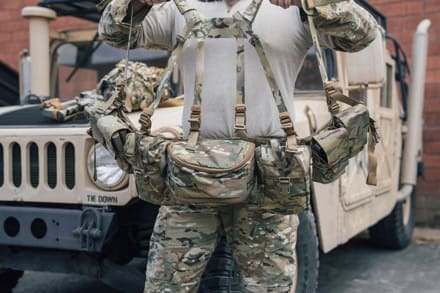
The demands of the jungle and airborne operational environments illuminated a key problem for modern light infantry. Because of the size of the large ruck frame, soldiers who used to patrol with their battle load accessible have had to put this load in a FLC or TAPS leaving it with their plate carrier inside their ruck while conducting the approach march with just a rifle in their hands. The Patent Pending LISS solves that problem. The flat nature of the harness allows it to be worn underneath the plate carrier, and the drop-down extender straps lower the belt to allow space for the large ruck to be worn. This will enable soldiers to move the same way we did with the LBE and ALICE ruck in the years before MOLLE.
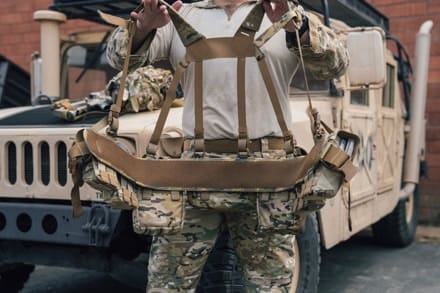
Rather than moving exposed and performing an awkward gear conversion in the ORP or PB, now the soldier maneuvers with most of his battle load accessible on the belt and additional load on the plate carrier. Not only does this spread out the load, but this allows more space in the ruck and provides a breathable configuration in hot weather and jungle operations.
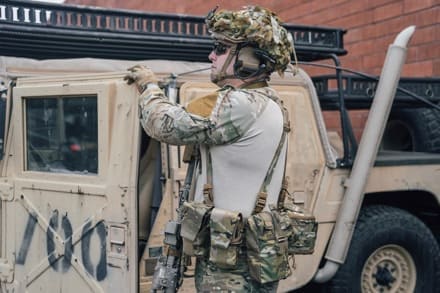
The SOTECH Battle Load Carriage System BLoCS Light Infantry Suspension System was developed with Army Special Forces Medics, Ranger Regiment, and the 25th Infantry Division. LISS recently completed the Army Expeditionary Warfare Experiment (AEWE) and is currently going through jump and field testing with the 82nd Airborne Division. Elements of the system have received NSNs and other elements are awaiting NSNs. Items are also available through DAPA, TLS, and GPC acquisition.
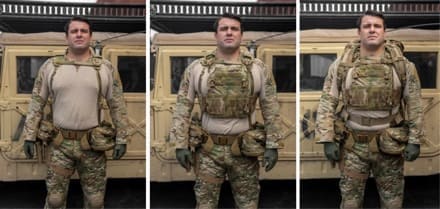
An adjustable one-size-fits-all flat squadron harness, the shoulder harness optionally suspends the belt system providing the operator with a choice of pouches mounted to a load-bearing belt. The three belts of the BLoCS LISS can be suspended from the six straps of the harness via side lock buckles. The buckles are set for quick attachment to the belts providing the option to use or not use the harness. The belts are designed so the soldier can disconnect the suspension straps and drop the belt 5 inches, and spin the belt part way around the waist moving the butt pack and rear pouches forward for access. The harness includes an optional flat sternum strap and flat deltoid strap for wear under armor plate carriers. The harness is one size fits all and is laser cut Squadron multicam or coyote brown. Slimline shoulder pads can be removed exposing aerated laser cuts but are usually kept in place even under plate carriers. The belt can be worn raised or dropped under a plate carrier. Optionally, soldiers can extend rear drops to accommodate a ruck while keeping the front drops fastened up. Some soldiers prefer to extend and retract the drop belt during long movements to shift weight from their hips to their shoulders and back.

Depending on the user’s preference we have established three different types of belts which range in width. All three variations have spacer mesh for through and through aeration and hidden Tegris for stiffener. 6 tabs for 6pt H Harness. Has 2 2-inch web and 2-inch side lock buckle (removable) with quick cinch adjusters to spread the belt when prone. The plastic belt can be removed and replaced through the slot with a riggers belt or cobra buckle belt to suspend a holster or thigh rig through bottom slots. A rear slot exists for the attachment of a harness anchor point. The belt system can be worn as an infantry war belt, a shooter’s pistol belt, or a Medic’s MARCH belt.
NSN: 8465-01-683-4472
NSN: 8465-01-679-0900
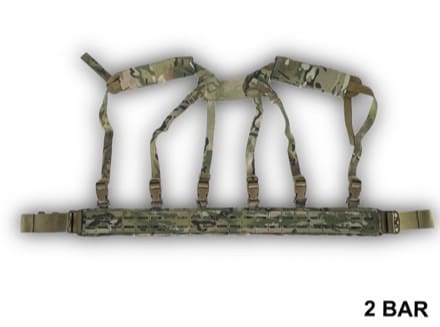
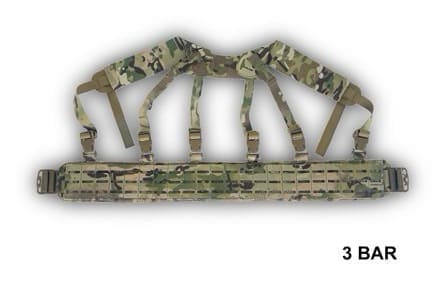
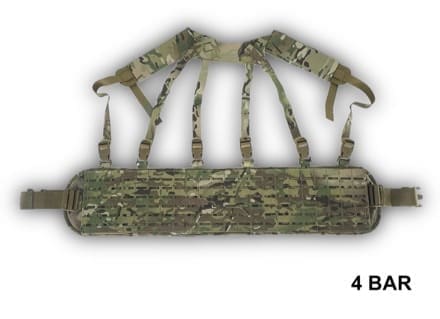
Light Infantry Suspension System as seen in Business Insider demonstrated by the 25th DI in Hawaii. S.O.Tech is always working usually behind the scenes to modernize the warfighter.
Light Infantry Suspension System – LISS Collection Below:
sotechtactical.com/collections/liss


Alright, so a couple of things:
1 – that first video…I love the idea of being able to unfasten some buckles and be able to lower the belt to allow it to be worn in conjunction with a PC and ruck. BUT, aren’t those buckles that stay in place mid back going to be a huge hotspot if they are then pinned in place under said PC/ruck? I would think that can’t be comfortable for any extended period of time.
2 – sizing. On the site it lists small/medium as stating at 36”. Most of the infantry guys that I served with were like 140lbs soaking wet, and they definitely weren’t a 36” waist. What am I missing?
Buckles: we had the same concerns, but in the tests with SF, Rangers, 25th ID, and USMA, all said the buckles were situated where there was no rub, pinch or Hotspots. I will have to check if there is a misprint on the belts..
I had the same question, but thanks for clarifying Jim.
All in all, it looks like a great system – and must be much better than putting all the weight of fully loaded plate carrier on the shoulders!
If the 22 PALS channel one pictured is S/M, then it’s absolutely too big. When I made battle belts, my smallest size (which I wear, a 140 lbs soaking wet person) was 18 PALS channels, so 6″ shorter.
I’m not sure there’s anyyhing groundbreaking here. The USGI ABN TAPS already incorporates a lowering function, albeit for a slightly different purpose.
With a couple minor modifications, I think the ABN TAPS could serve as a chest rig OR a true belt rig. The Army could issue that one system could fill 95% of roles & situations.
A little feedback here, the front securing strap seems little bit too close to the neck, look like he’s going to be suffocated if he leans forward, from the picture.
Is the front strap/buckle placement adjustable? I had some moments when front straps hanged my neck when I try to aggressively lean forward or pick up things with LBVs or backpacks.
I could’ve used this in Laos.
One thing I like that all these recent ALICE reboots are missing is the 4-bar version of the belt, more like a British PLCE hippo belt. Much more stable and it looks like it shouldn’t hold much heat with the mesh.
It’s interesting to watch American manufacturers beginning to experiment with these classic style systems.
The British suspension configuration is superior and it’s good to see that they kept the 6 strap yoke. The comments above are correct, you need a wider belt for maximum load bearing comfort and stability.
Is it just me, or is that price a little unreasonable?
After all these years we’re going back to the ALICE system?